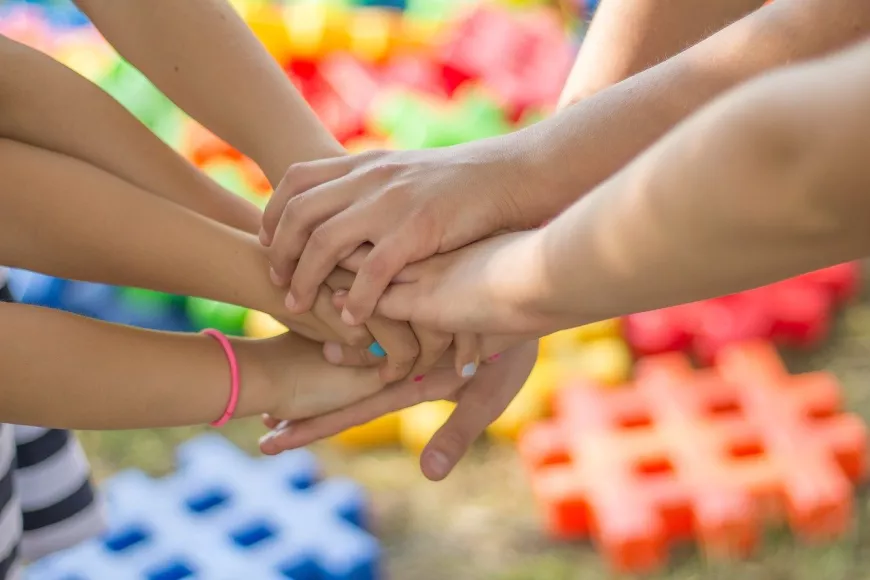Simple Steps Can Help Prevent Suicide Among LGBTQIA2S+ Youth

The COVID-19 pandemic forced isolation among people that increased the likelihood of mental health struggles among LBGTQIA2S+ youth and raised awareness of the crucial role mental health plays in our overall wellbeing.
The ability to gather with friends and family is a protective social factor that keeps people engaged and connected to their community. The option of spending time with supportive people is a social resource that many people lost during the pandemic, leading to greater isolation and mental health struggles. In addition to the isolation and loss of community during the pandemic, limiting in-person contact prevented some people from accessing mental health care.
Being recognized and honored for who you are is also a protective factor that many people who identify as LGBTQIA2S+ do not always experience. Quarantine made it increasingly difficult for people to engage in healthy social outlets — particularly for the LGBTQIA2S+ community.
The Trevor Project, an organization serving LGBTQIA2S+ youth, reports that LGBTQIA2S+ youth represent about 40 percent of youth experiencing homelessness in the U.S. Family rejection is a significant factor for homelessness among LGBTQIA2S+ youth. For young people who lived in homes where their identities were not accepted, the isolation during the pandemic limited access to affirming, inclusive groups and opportunities to connect with classmates and friends.
Gender Identity & Mental Health
LGBTQIA2S+ adolescents are at an increased risk for death by suicide – currently the second leading cause of death for youth people ages 10-24 years old in the United States. There is a significant connection between being transgender and suicide risk. According to a study published by the American Academy of Pediatrics, between 30-51% of transgender adolescents reported a lifetime of suicide-related behaviors. This data is supported by similar findings from the annual National Survey on LGBTQIA2S+ Youth Mental Health 2021 published by The Trevor Project.
The Trevor Project survey was completed by 35,000 LGBTQIA2S+ youth between the ages of 13-24 across the United States on the impact of the COVID-19 pandemic, mental health care disparities, discrimination, food insecurity, conversion therapy and suicide. The survey also studied the benefits of LGBTQIA2S+-affirming spaces and respecting pronouns of transgender and nonbinary youth.
The survey provides a number of important and staggering statistics including:
- 42% of LGBTQIA2S+ youth seriously considered attempting suicide in the past year, including more than half of transgender and nonbinary youth — this is a 2% increase from the 2020 survey.
- According to the Center for Disease Control, youth who identify as LGBTQIA2S+ seriously considered attempting suicide at almost three times the rate of youth who do not identify as such. They are almost five times as likely to have attempted suicide compared to youth who do not identify as LGBTQIA2S+.
- 72% of LGBTQIA2S+ youth reported symptoms of generalized anxiety disorder in the past two weeks, including more than 3 out of 4 transgender and nonbinary youth — a 4% increase from the 2020 survey.
- 62% of LGBTQIA2S+ youth reported symptoms of a major depressive disorder in the past two weeks, including more than 2 out of 3 transgender and nonbinary youth — an increase of 7% from the 2020 survey.
- More than 80% of LGBTQIA2S+ youth stated that COVID-19 made their living situation more stressful.
- Only 1 in 3 LGBTQIA2S+ youth found their home to be LGBTQIA2S+ affirming.
Supporting & Affirming Transgender Youth
Some effective ways to help support transgender youth and young adults that can help prevent suicidal behavior include:
- Using and respecting identified pronouns. A household member using and respecting identified pronouns decreased attempted suicide by half the rate compared to youth who did not have their pronouns respected.
- Allowing gender-affirming change to legal documents. One way to lower rates of attempted suicide among transgender and nonbinary youth is allowing their name and/or gender marker on legal documentation to be changed.
- Safe spaces. Having and ensuring access to spaces that affirm sexual orientation and gender identity can also lower the attempted suicide rate.
We all want to be honored and recognized for who we are. This is true of all people. Honoring and supporting LGBTQIA2S+ young people by respecting their pronouns, using their chosen names and ensuring that our spaces affirm their identities can profoundly impact their mental and emotional wellbeing and help them thrive.
This article was authored by Sierra Renham, an LSS Behavioral Health therapist.
